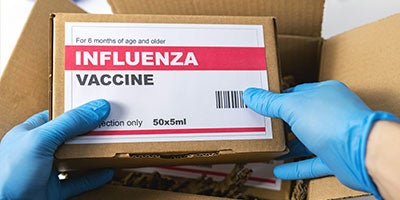Implications of the increasing complexity of therapeutic modalities
The global biopharma pipeline is anticipated to continue its shift toward ATMs like cell, gene and nucleic acid therapy. Biopharma companies prioritizing these innovative modalities will benefit from generally shorter timelines to clinical development while increasingly emphasizing the importance of improving manufacturing efficiency and reducing cost of goods sold (COGS). Biopharma companies will also need to develop manufacturing and supply chain strategies early (i.e., buy versus build dynamics) and may prioritize partnerships with service providers that can enable cost-effective scaled manufacturing.
The continued growth of the ATM pipeline will increasingly require fit-for-purpose tools and services (e.g., genetic payload construct design and screening) and manufacturing capacity/expertise to bring the pipeline to fruition.
Earlier in the value chain, CROs and CDMOs may need to adapt to increasingly complex R&D requirements from biopharma partners developing ATMs, which have unique needs for discovery (e.g., construct design and screening) as well as unique challenges for process/analytical development.
In drug manufacturing, while there may continue to be a capacity supply/demand gap, an expertise gap is increasingly developing as the industry lags in training key facilities personnel.
Meanwhile, life sciences tools companies and others providing reagents/consumables (e.g., media) and critical inputs (e.g., plasmid DNA) will likely continue to prioritize differentiated offerings that can be designed in, or “locked in,” to good manufacturing practice and the analytical testing of ATMs, with the aim of driving outsize growth with future commercial demand for supported programs.
Across both services and tools players, AI and in silico capabilities investments are common themes to drive R&D efficiency and help reduce COGS, though significant wet lab capabilities are still required to support these computational tools.
Private investors seeking to participate in the growth of ATMs should prioritize life sciences tools and service providers that offer the specialized capabilities and unique technology required to support an increasingly complex client base, especially those that may benefit from the high switching costs of the process lock-in dynamic.
Rise of advanced diagnostics
The rise of advanced diagnostics (ADx) is reshaping the landscape of patient care and treatment strategies. Over the past five years, there has been a consistent flow of novel ADx launches, supporting their growing prominence within the life sciences. Much of this focus has been channeled into oncology and traditional molecular diagnostic applications such as therapy guidance, which are one-time tests.
Step changes in technology have allowed for the detection of analytes in blood, enabling novel, minimally invasive diagnostic applications, including circulating tumor DNA (ctDNA) tests such as Guardant360 and multicancer early detection (MCED) technologies like those developed by Thrive and GRAIL.
These blood-based diagnostics have also unlocked novel use cases, including therapy monitoring and resistance mutation detection (e.g., EGFR T790M) and minimal residual disease (MRD) detection, like Signatera and ClonoSeq. These novel use cases offer a wide-ranging value proposition to physicians and patients, primarily for disease monitoring, and to biopharma, by incorporating surrogate endpoints in clinical trials and helping identify label expansion opportunities with RWE.
Importantly, payer coverage for novel diagnostic technologies, traditionally a challenge for diagnostics commercialization, is evolving. Notable examples include the Centers for Medicare & Medicaid Services’ coverage for Natera’s Signatera in pan-cancer immuno-oncology since 2021 and Adaptive’s ClonoSeq for diffuse large B-cell lymphoma since 2022. This year, Blue Shield of California has approved the Invitae Personalized Cancer Monitoring assay across solid tumors, while UnitedHealthcare has issued broad coverage guidelines for oncology ADx (see Figure 8).
Although oncology has been the primary beneficiary of these advancements, blood-based tests may continue to expand the diagnostic toolkit into other areas, such as infectious diseases, immunology and neurology. Examples include pathogen identification using next-generation sequencing for infectious diseases, risk stratification and diagnosis for immunology, and using P-tau and synucleins to diagnose neurodegenerative diseases.
















